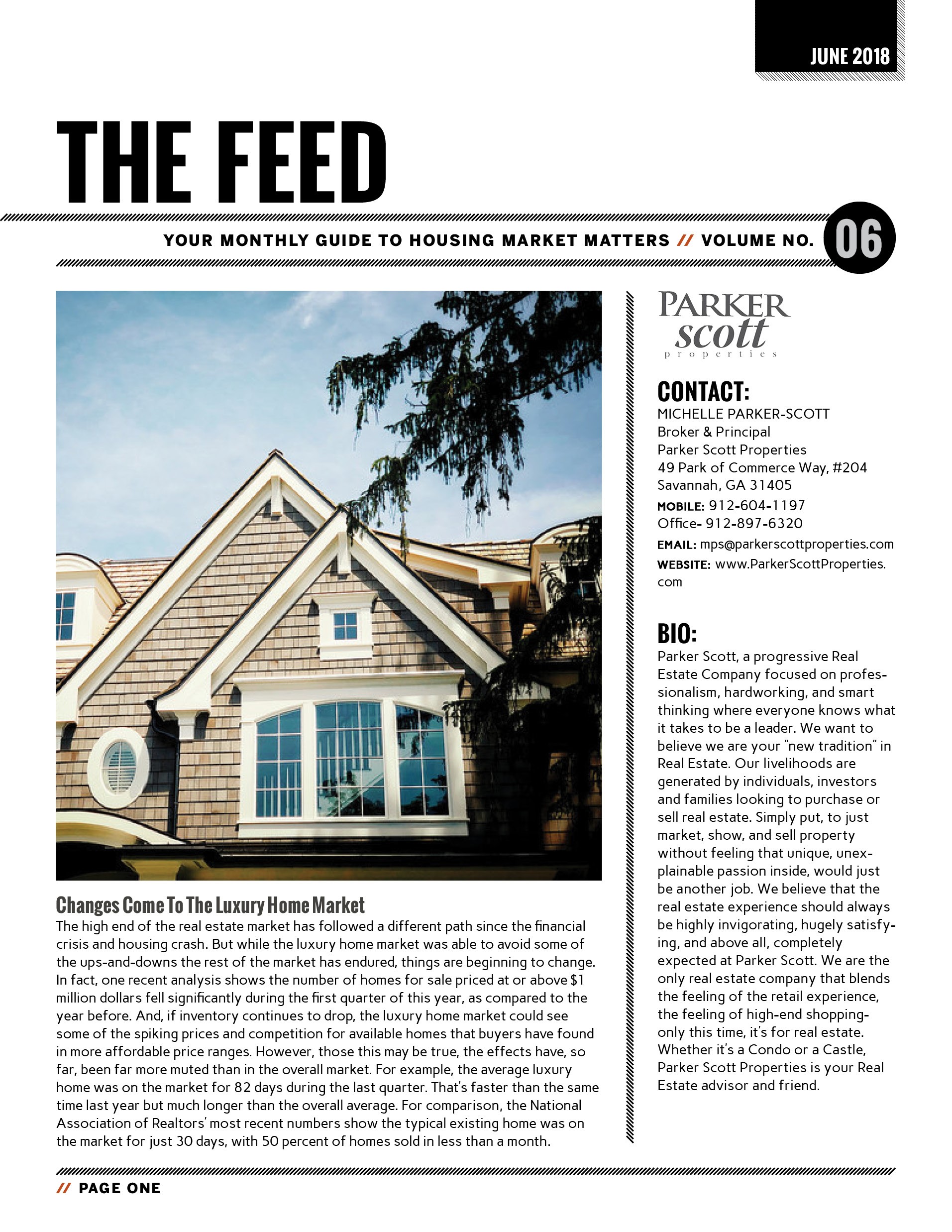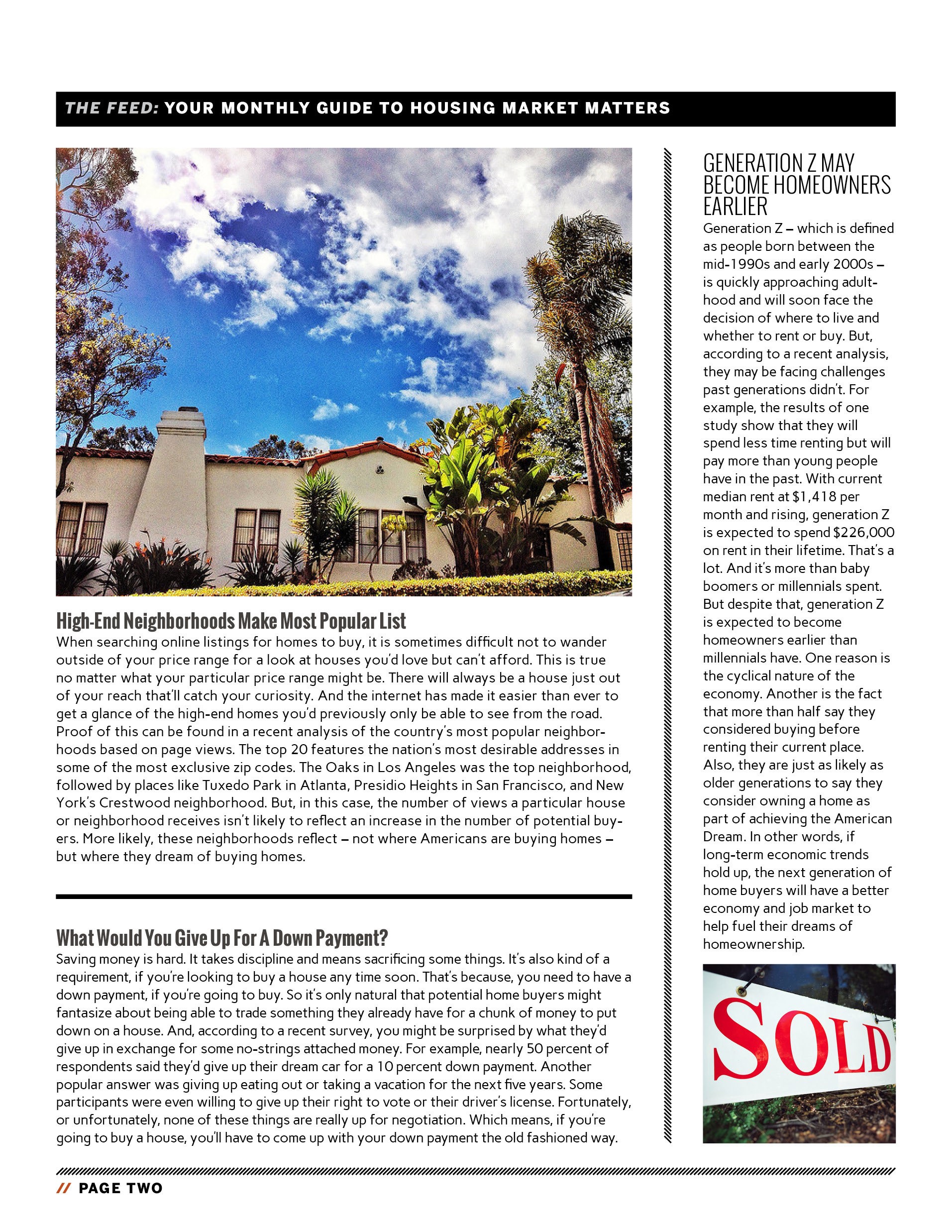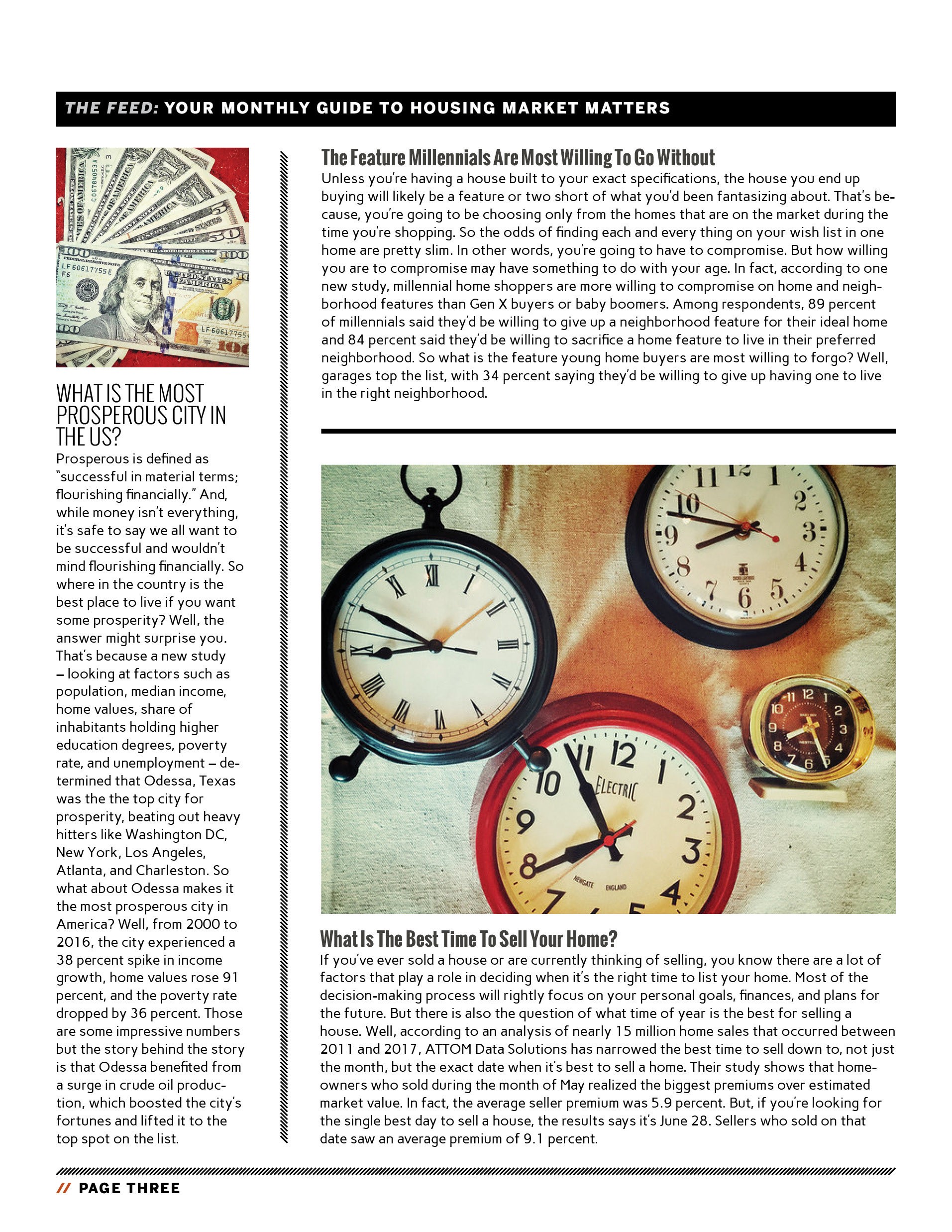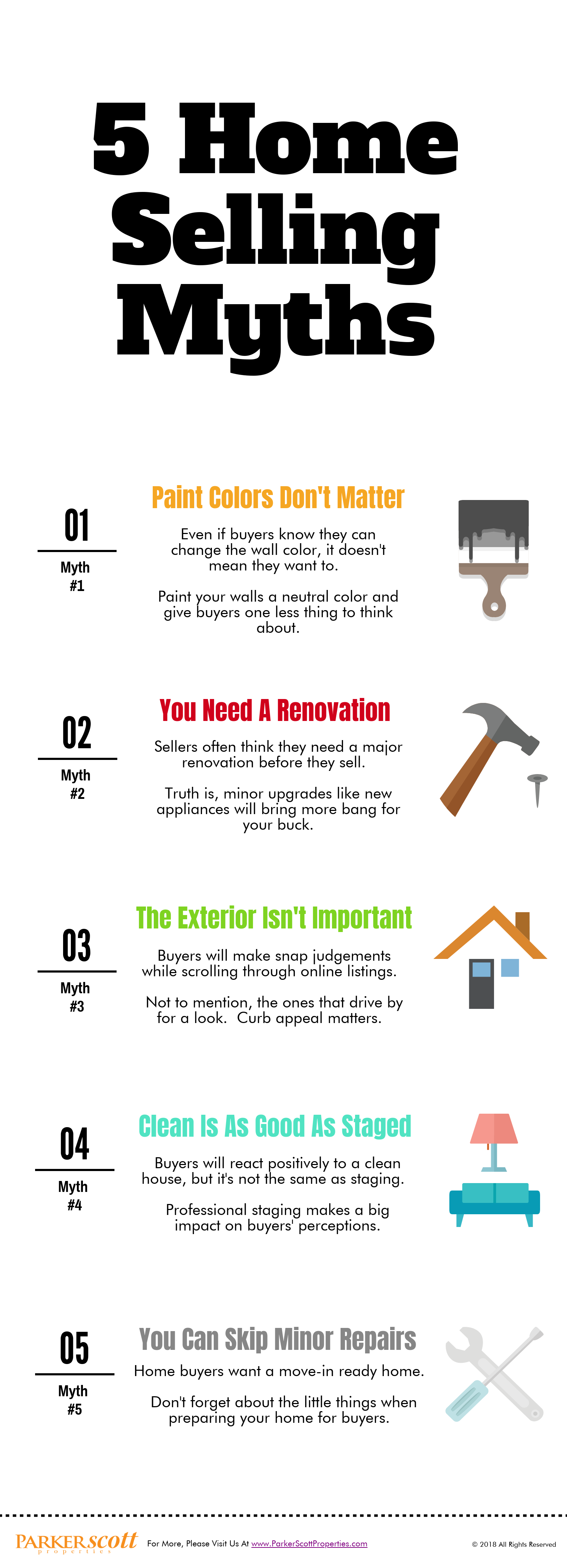


June 2018 Newsletter






Home prices are a top concern for both home buyers and sellers. After all, a lot of the calculus that goes into determining whether or not it’s a good time to sell or buy a house is based on where home values are and where they are expected to be in the future. For that reason, it’s good to follow the S&P Case-Shiller Home Price Indices, as they are considered the leading measure of U.S. home prices. According to the latest data, prices have continued to rise at around the same pace they’ve been increasing, with both month-over-month and year-over-year data showing little change. In short, prices are going up but no faster than they have been. David M. Blitzer, managing director and chairman of the index committee at S&P Dow Jones Indices, says things aren’t expected to change any time soon. “Unless inventories increase faster than sales, or the economy slows significantly, home prices are likely to continue rising,” Blitzer says. But despite rising prices, Blitzer notes that the market is calmer today than it was during the last price boom in the early 2000s. More here.
If you aren’t in the market for a new home, why should you care about the new home market? Well, for starters, it plays a very important role in the health of the housing market. And that affects all buyers, not just new home buyers. How? Simply put, new home construction is the quickest way to add homes for sale to the market. And, when more homes are added, buyers can be more choosy, which results in less competition and fewer home price spikes. In other words, when new homes are being built and sold, the overall real estate market benefits, including buyers looking for an existing home in a more affordable price range. So, if that’s true, how’s the new home market doing? According to the latest numbers from the Commerce Department, new home sales were 11.6 percent above last year’s level in April, which is good. But, though year-over-year numbers are positive, recent revisions to totals from the first three months of the year were revised downward, indicating some lingering weakness in the market. More here.


Prosperous is defined as “successful in material terms; flourishing financially.” And, while money isn’t everything, it’s safe to say we all want to be successful and wouldn’t mind flourishing financially. So where in the country is the best place to live if you want some prosperity? Well, the answer might surprise you. That’s because a new study – looking at factors such as population, median income, home values, share of inhabitants holding higher education degrees, poverty rate, and unemployment – determined that Odessa, Texas was the the top city for prosperity, beating out heavy hitters like Washington DC, New York, Los Angeles, Atlanta, and Charleston. So what about Odessa makes it the most prosperous city in America? Well, from 2000 to 2016, the city experienced a 38 percent spike in income growth, home values rose 91 percent, and the poverty rate dropped by 36 percent. Those are some impressive numbers but the story behind the story is that Odessa benefited from a surge in crude oil production, which boosted the city’s fortunes and lifted it to the top spot on the list. More here.

The high end of the real estate market has followed a different path since the financial crisis and housing crash. But while the luxury home market was able to avoid some of the ups-and-downs the rest of the market has endured, things are beginning to change. In fact, one recent analysis shows the number of homes for sale priced at or above $1 million dollars fell significantly during the first quarter of this year, as compared to the year before. And, if inventory continues to drop, the luxury home market could see some of the spiking prices and competition for available homes that buyers have found in more affordable price ranges. However, those this may be true, the effects have, so far, been far more muted than in the overall market. For example, the average luxury home was on the market for 82 days during the last quarter. That’s faster than the same time last year but much longer than the overall average. For comparison, the National Association of Realtors’ most recent numbers show the typical existing home was on the market for just 30 days, with 50 percent of homes sold in less than a month. More here.
Buying a house in a competitive market can be challenging, even for buyers that have been through it before. Getting into a bidding war with another buyer means possibly pushing your budget, or worse, losing the house you set your sights on. But finding and buying a house in a competitive market is especially intimidating for a first-time buyer, who may already be a little overwhelmed by the process. The good news is that, though there are generally fewer homes available to buy across the country, not all markets are equally competitive. For example, a recent analysis of housing markets looked for those that have available homes, smaller down payments, and a strong home appreciation forecast – in other words, areas that would be favorable for first-time buyers. According to the rankings, cities like Tampa, Orlando, Houston, Atlanta, and Las Vegas have more opportunities to buy an affordable, entry-level home than in other markets where inventory is tighter and there is higher demand. In short, there are still opportunities for buyers, so it’s a good idea to look into the dynamics of your desired neighborhood before talking yourself out of buying this year. More here.
 Every month, Fannie Mae surveys Americans to better understand how they view the housing market, their personal finances, and the overall economy. Their Home Purchase Sentiment Index is a measure of how people around the country feel about buying or selling a home. And, according to the most recent results, they currently feel like it’s time to buy. In fact, there was a 10 percent increase in the number of respondents who said they felt like it was the right time compared to February’s survey. Doug Duncan, Fannie Mae’s senior vice president and chief economist, says sentiment has been volatile lately. “The HPSI’s recent run of volatility continued in March, as it recovered last month’s loss and remained within the five-point range of the past twelve months,” Duncan said. “The primary driver of this month’s increase was the sizable rise in the net share of consumers who think it’s a good time to buy a home, which returned the indicator to its year-ago level.” Boosted optimism about buying a house may be due to the spring buying season or perhaps a feeling among potential buyers that affordability conditions may worsen if they wait. More here.
Every month, Fannie Mae surveys Americans to better understand how they view the housing market, their personal finances, and the overall economy. Their Home Purchase Sentiment Index is a measure of how people around the country feel about buying or selling a home. And, according to the most recent results, they currently feel like it’s time to buy. In fact, there was a 10 percent increase in the number of respondents who said they felt like it was the right time compared to February’s survey. Doug Duncan, Fannie Mae’s senior vice president and chief economist, says sentiment has been volatile lately. “The HPSI’s recent run of volatility continued in March, as it recovered last month’s loss and remained within the five-point range of the past twelve months,” Duncan said. “The primary driver of this month’s increase was the sizable rise in the net share of consumers who think it’s a good time to buy a home, which returned the indicator to its year-ago level.” Boosted optimism about buying a house may be due to the spring buying season or perhaps a feeling among potential buyers that affordability conditions may worsen if they wait. More here.